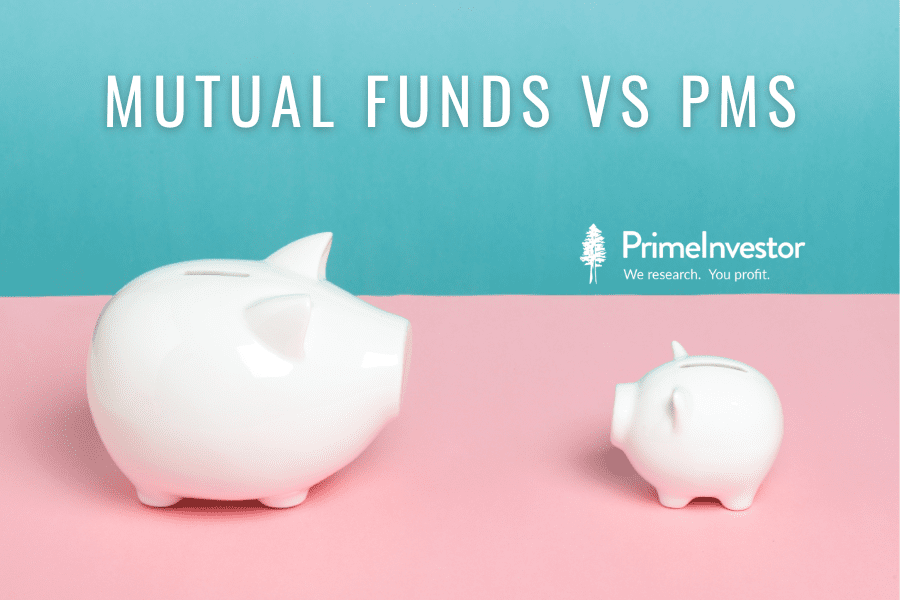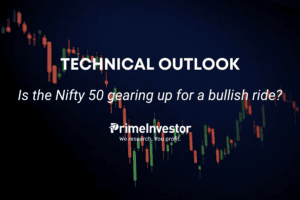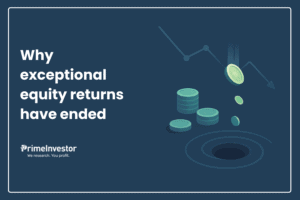For investors who can write a single cheque of Rs 50 lakh or more, Portfolio Management Services (PMS) have emerged a popular vehicle for investment into equities. In effect, PMS is identical to investing directly in shares, the main difference being that you have given absolute power to the PMS agency to buy/sell shares on your behalf and your portfolio choices are left to them.
You can enroll in a PMS by either giving a cheque or shares worth the minimum value. If you give shares, the PMS manager will revamp your portfolio and may sell some of the shares you own. Taxation wise, it is the same as if you directly bought and sold. PMS is generally limited to investing in listed equity or debt. There is another family of portfolio services if you can write a cheque for a crore of rupees and above. It is grouped under a family name of “Alternative Investment Funds” or AIFs. AIFs and PMS’ differ in a significant way. In AIF, the assets of multiple investors in a scheme are pooled together. In PMS, your portfolio is identified with you alone. AIFs can invest across asset classes, can be leveraged, can go short or long. Here, I am limiting my discussion to PMS.

Where PMS scores
For investors who prefer the direct route to equities, the PMS route offers some distinct advantages. Unlike MFs whose performance is measured against indices over short periods such as a month, quarter or year, PMS are generally not benchmarked to any index. This gives the manager complete flexibility in choosing scripts and assigning weightages. There is no compulsion to mimic any index. But the investor has come to PMS seeking returns higher than a mutual fund or the index, so the index should be a rough benchmark to evaluate PMS performance.
Unlike MFs where individual stock weights are capped at 10% and sector weights at 25%, PMS managers have absolutely no restrictions on diversification or concentration of investors’ portfolios. As they claim to be experts, they should be able to deliver far superior returns as compared to MFs or benchmark indices. Just as an aside, a PMS manager can benchmark to the Nifty50, pick some stocks that are going to do badly and keep away from them. If he has a great pick, he can take on a substantial position size to impact the overall portfolio. He can also go wholly into cash, if market conditions are hostile. I know of one PMS manager who went to over 50% cash at one time!
My expectation from a PMS would be that in a bull market, I beat the index comfortably and in a bear market, the drawdown is far lower than the fall in the index. Tracking the index is not what I seek from a PMS. For this, I would rely on ETFs and MFs. I am seeking superior returns from the stars and experts in the industry.
The fees
Generally, PMS charge annual fees of around 2.5% of assets and in addition there is a ‘performance’ fee that is either linked to a hurdle rate (say ten percent) or to some other agreed benchmark. This can be 10 to 20% of the excess returns over the agreed hurdle rate. There are PMS’ with higher and lower fee structures too, depending on negotiations. In many cases, the fees are shared with the distributor. We are yet to see a formal ‘direct’ version of PMS like we have with mutual funds.
PMS fees are typically higher than what mutual funds levy. The maximum TER that mutual funds can charge on equity funds is 2.25% and the fund size gets bigger this cap goes down to 1.05%. On direct plans, fees are typically lower. Investors also need to note that the performance fee on PMS is annual. This means that if I stay invested for five years and end up with no returns at the end, I would still have paid performance fees in the years when there was an excess over the hurdle rate! In volatile assets like equity, the average return is a function of duration. So it would have been ideal if the performance fee were only chargeable at the point of exit by an investor.
Taxation
MFs are treated as pass-through entities for taxation. So the investor is subjected to capital gains (Short /Long etc) only when he buys or sells units. The MF might be churning the portfolio any number of times and this is not taxed and nor does it entail taxes on the investor. In a PMS, every trade is treated as if it is the investor who has done it and therefore, excess churn by the PMS goes to reduce your effective returns. To this extent, there is a disadvantage in PMS. Of course, if a PMS has low churn it can be comparable to MFs.
If the PMS manager is picking stocks for the long term, then the churn should be minimal. The argument in favour of churn is that as a fund manager, one may like to trade on the inventory in order to generate higher returns. For example, a PMS can buy HDFC Bank shares and it delivers, say, 14 percent return point to point, over a year. As a professional manager, one can say that it trades in a range which gives me an opportunity to sell and buy it back, with a gain of at least Rs.20 each time. If one trades it ten times in a year, one gets an extra Rs.200 as return. Even after taxes, there is a positive addition to the total returns through this kind of trading.
Disclosures
In a mutual fund, you get to know about the portfolio of the scheme where you are a unitholder, typically through an end-of-month factsheet. You do not know what happened in between two sets of data. And funds have been known to take short term positions in-between disclosure dates. In a PMS, you know every trade as it happens, because you are authorizing it. This leads to more timely disclosures on portfolio moves.
All the above factors indicate that a PMS “should” be a preference over an ETF or mutual funds for investors whose primary focus is wealth creation, because the vehicle is designed to generate great returns. If you are not an expert at picking stocks, that’s why you seek out the PMS manager. You trust his skills and expect better returns than a MF, which is why you are willing to pay a higher fee as compared to a MF.
The PMS landscape
The landscape:
There are around 1.35 lakh investors in the PMS segment as against over 10 crore ‘folios’ in the MF industry and about 3 crore unique investors.
PMS returns are available on the SEBI website. But the website of PMSBazaar.com which provides an extensive range of information and data on PMS is friendlier and easy to use.
Taking stock of the returns of schemes that manage over Rs 1000 crore from PMSBazaar’s October 2022 newsletter, here’s what I find. (PMS without asset disclosures are excluded)
The data above clearly brings out the substantial return divergence between PMS schemes even within a category. Some have done well. Some have done quite badly. The trend clearly seems to track the broad indices, even if managers have the liberty to remain in cash. Clearly, choosing one is not easy. A big-name brand and size are no indicators of performance.
Please note that reading PMS returns is not that easy. Read this article on SEBI’s requirements and the divergent reporting practice in performance disclosures.
What’s more, in the case of PMS, unlike MFs, the returns on model portfolios disclosed by the managers can diverge quite a bit from individual investor returns. This goes to show that choosing the right PMS to invest in is an extremely demanding task. Given the complexity, you will not be very worse off if you simply put your money into ETFs on the three indexes. The industry is a minefield and one has to step very carefully. The only data we do not seem to have is the incidence of taxation on these returns, which can make a big difference to the net returns to the investor.
Therefore, while PMS do have many advantages, there’s a dark side too. In the good old days, PMS managers were allowed ‘pooled’ accounts which allowed a lot of malpractice. PMS schemes can also be abused by being used as a vehicle for parking illiquid shares, price manipulation games etc. But today, with increased disclosures, I am hopeful that these practices do not exist. In any case, when you get to know what you buy, you can make a reasonable judgment on the credibility of the PMS manager. The PMS manager will give you a rationale for buying a share as well as for selling.
SEBI must be commended for raising the bar on PMS reporting, but there are still some gaps. It would be useful if reporting of AUM is made compulsory. I hear of cases where inflated figures are given to potential investors. I also wish SEBI would regulate the performance fee based on the stay of the investor rather than on a financial or calendar year-based relative performance. The other thing that SEBI can do is to bring about a two-tier fee structure like MFs- those who come through brokers and those who come directly.
Finally, one personal observation. When a PMS manager talks in the media, any comment on specific stocks should be avoided. Celebrity portfolio chasing is generally not a good thing. Yes, it is fine so long as the person also talks about selling it BEFORE he actually sells it from the portfolio. But this is not practical. It is surely an issue of governance and maybe SEBI will one day address it. Given all this, if I have enough resources, I would first build an ETF portfolio before opting for a PMS scheme. But I will surely negotiate hard on the fee with the provider of the PMS.
(I have not touched upon the debt PMS at all. Our debt markets are illiquid. I would rather invest directly into debt, if I have to.)







15 thoughts on “Mutual funds vs PMS – Pros and Cons”
Very good article, comparing the Mutual Funds which are open and transparent and closed ones like PMS.
Excellent article as always truly giving the pros and cons too!! Keep up the good work!
In the article you have mentioned “you will not be very worse off if you simply put your money into ETFs on the three indexes” which we infer would be Nifty, Nifty Midcap and BSE Small Cap – where as for Nifty and Nifty Midcap now there are ETFs is there any ETF for Small Cap? Kindly revert thanks.
Not ETFs but there are index funds available on Smallcap 50 and smallcap 250. And btw there are many other indices such as Nigty 100, Nifty 500 and so on and multiple variants of midcap indices. You can check our ETF call in Prime ETFs https://www.primeinvestor.in/prime-etfs/ and index calls in Prime Funds https://www.primeinvestor.in/best-mutual-funds
Thanks, Vidya
good Article o PMS..
Excellent article. ! Timely & very educative.can you comment on your views on PMS of mutual funds as offered by some like Morning star Mutual fund PMS
There is very little to no info on PMS in a uniform manner unlike mutual funds. Disclosures are also very complex and we won’ have access to their portfolios and weights unless we are investors ourselves. So we do not review ANY PMS. We do not also have a great view as performance of the ones we saw have not been encouraging vis a vis the fees. thanks, Vidya
Kindly do an article on PMS vs Focussed Funds
I am glad this article is published. It’s indeed very useful and your observations are very apt. Over the past 10 years, I have invested in about a dozen PMSes and have withdrawn from about half a dozen due to poor performance when their returns over a period of more than 18 months do not even match the returns from indices. And when I withdraw, I have to pay an exit load for their non-performance!!
I have been a critic of the PMS schemes all this time. Despite that, I continue to stay invested in about 5 schemes only with the hope that they will be able to show better returns over a period of 3-5 years! And there is no indication towards that.
All PMSes compare their returns with the indices and many of them even fail to do better than them. I compare the returns from PMSes with multiple mutual fund schemes of similar category and invariably, the MF schemes have shown better returns. None of the PMSes indicate the risk involved in their PMSes unlike the MFs which indicate the Standard Deviation, Sortino ratio or similar ratios.
In addition , there is a cash outflow every year towards capital gains tax. And it is better to assume that the fees payable for portfolio management is not tax deductible which means the eventual returns reduce.
As you have correctly concluded, I endorse that investing in MF schemes or index funds (for passive investing) is significantly better than investing in PMSes since all expenses incurred are subsumed in the NAV, income tax is paid only on the actual gains on redemption of the units and exit load, if any is payable only upto a year.
Thank you Sir for sharing your experience. The article by Vidya is like theory and your experience is like practicals.
Generally people don’t share bad experiences, especially in financial matters. I appreciate frankness in sharing your experience with the group, so others can get the benefit.
Ramamohan
Well written article! Can you tell me which category do the Intelligent Advisory Portfolios (IAP) by Motilal Oswal fall under – are they PMS or more like privately held MFs?
Don’t think so. PMS required min Rs 50 lakh per SEBI. They are just adviSed portfolios sold by advisors. Somewhat like smallcase with a portfolio linked fee. Vidya
I had invested in Motilal Oswal IOP portfolio it has returned minus 11.45 percent in 5 years. I invested in 2017. They come on Media and claim lot of things
Thanks for the detailed report. A much needed one. It will be better, if you have included DIY platform like Small case also.
Article: Mutual funds vs PMS – Pros and Cons
While indicating 1/3/5 year return on PMS; it would make sense if average return of comparable MF is mentioned. PMS , unless and until is able to demonstrate it’s superior return; is a overrated and expensive product.
Comments are closed.